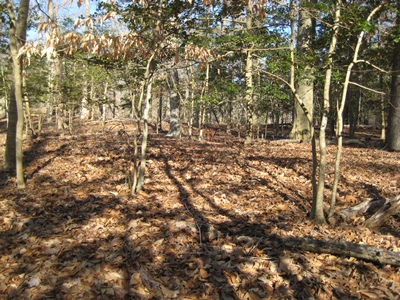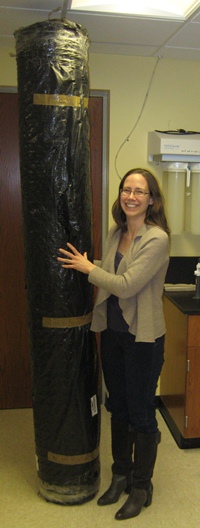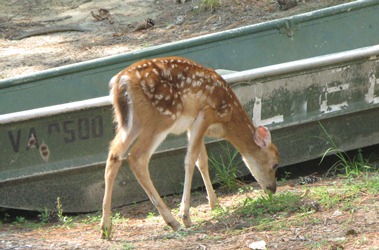Deer Browsing Draws Herd of Biologists
 The hot topic in and around Williamsburg these days is the intersection of deer and people—what to do about the conflict between humans and the burgeoning deer populations in our local surroundings? The general public can relate to issues that include: collisions between deer and motor vehicles; rampant browsing by deer of gardens and landscaping flowers and shrubs; the disturbing relationship between deer density and the incidence of tick-borne diseases in humans. In theory, some of these issues can be addressed by managing the deer populations somehow—keeping deer out of areas of concern, reducing deer fertility, and/or increasing hunting of deer locally (see a related article in the New York Times for biology professor Dan Cristol’s take on this). While the finances, logistics, and ethics of different management options are discussed by Williamsburg residents, the deer continue to thrive.
The hot topic in and around Williamsburg these days is the intersection of deer and people—what to do about the conflict between humans and the burgeoning deer populations in our local surroundings? The general public can relate to issues that include: collisions between deer and motor vehicles; rampant browsing by deer of gardens and landscaping flowers and shrubs; the disturbing relationship between deer density and the incidence of tick-borne diseases in humans. In theory, some of these issues can be addressed by managing the deer populations somehow—keeping deer out of areas of concern, reducing deer fertility, and/or increasing hunting of deer locally (see a related article in the New York Times for biology professor Dan Cristol’s take on this). While the finances, logistics, and ethics of different management options are discussed by Williamsburg residents, the deer continue to thrive.

他
One way to examine the multifarious effects of deer is to compare sections of forest exposed to deer browsing with sections in which deer are excluded. The biology department is about to conduct this very experiment in the College Woods. A group of faculty led by assistant professor Dr. Harmony Dalgleish was funded this spring by the Morton Science Lab Fund to acquire materials to construct “deer exclosures” in the College Woods. At least six faculty members are involved: Drs. Case, Chambers, Cristol, Dalgleish, Leu, and Swaddle. The number, location, and size of the exclosures will be determined to exploit both teaching and research opportunities for biology students and faculty. The BIOL220 and 225 labs, for example, are slated to complete measurements in the exclosures and in adjacent areas still exposed to deer grazing. Measurement variables will include items like plant species diversity, plant biomass, and bird nesting. Tick surveys inside and outside exclosures will document whether vectors for human diseases are facilitated by deer.
According to Dr. Dalgleish, “I see the exclosures in the College Woods as a way for our students to learn about an important ecological question that has relevance for our campus and for Williamsburg. Because the exclosures will be used by multiple classes over the years, the labs students do in the Woods become an authentic model for experimental, long-term and collaborative ecological research.”

















